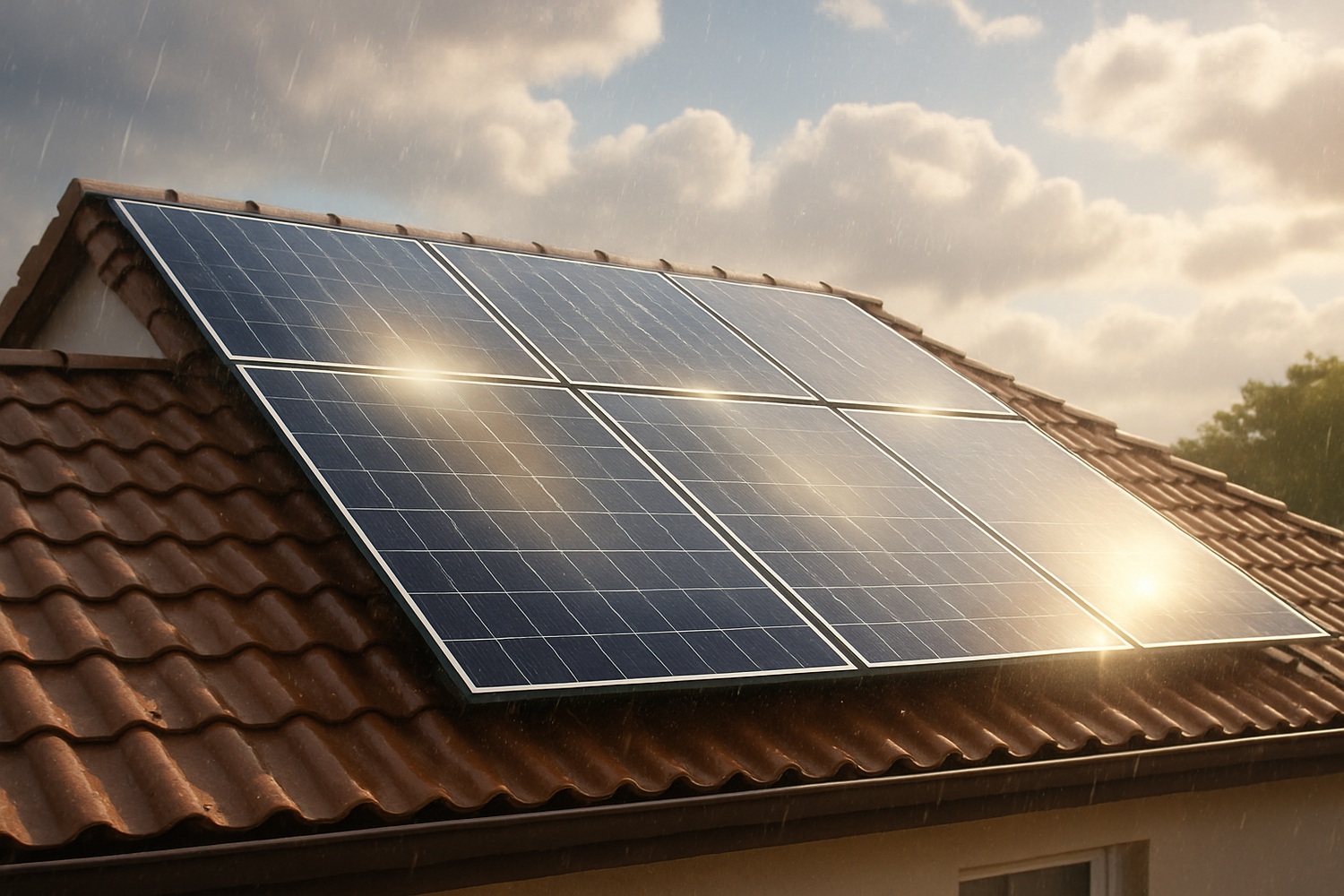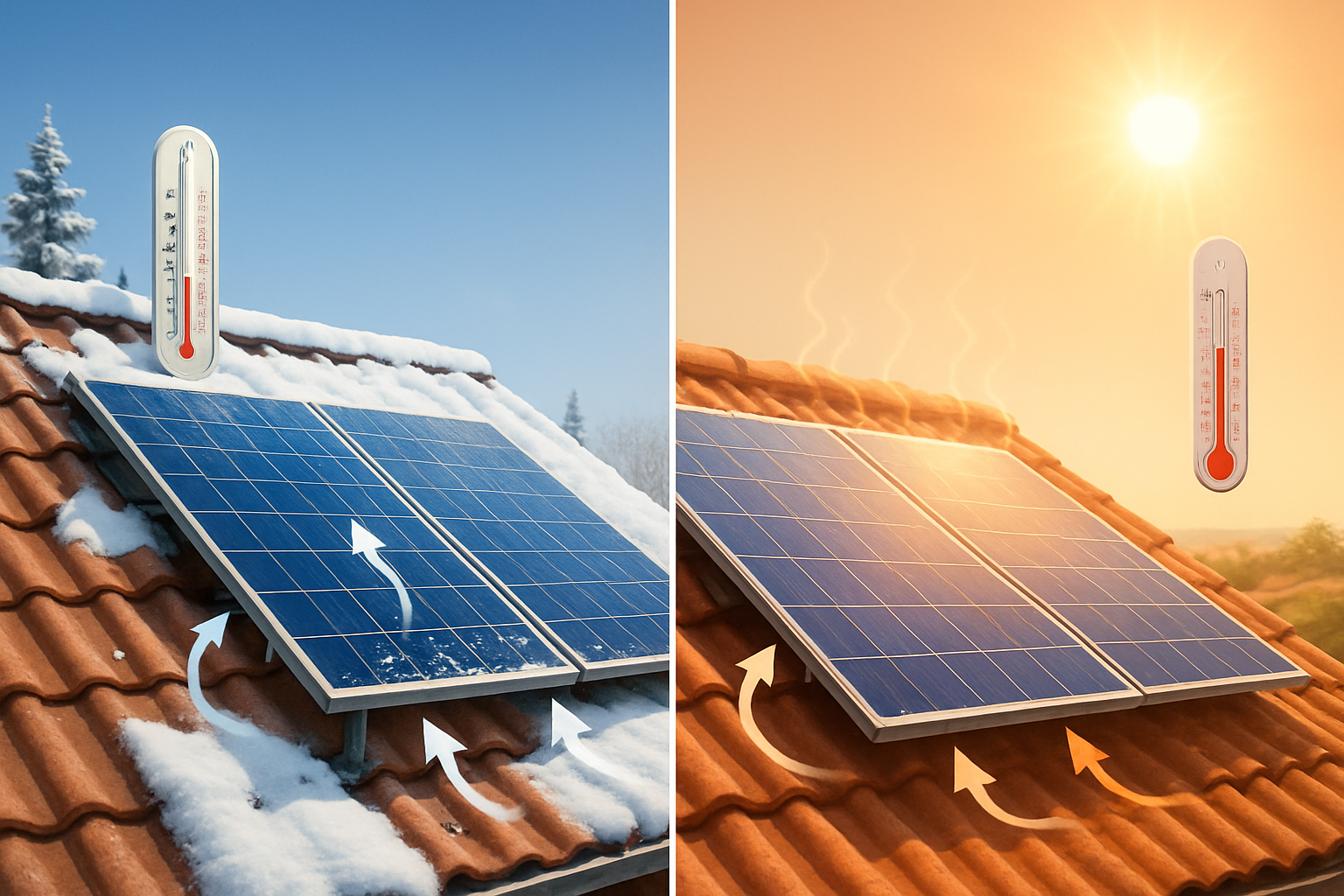Many individuals considering solar power often wonder about its reliability when the sun is not shining brightly. It's a common misconception that solar panels cease to produce electricity on cloudy or rainy days. The truth is, solar technology is more resilient and adaptable than you might imagine. While direct sunlight offers optimal performance, your solar panels continue to generate power even under less-than-ideal sky conditions.

Understanding Solar Panel Operation in Less-Than-Ideal Conditions
Solar panels, also known as photovoltaic (PV) panels, convert sunlight into electricity using the photovoltaic effect. This process does not require direct, intense sunlight to occur. Instead, PV cells can utilize both direct and diffuse sunlight to generate power. Diffuse sunlight is light that has been scattered by clouds, haze, or dust in the atmosphere. This capability allows solar panels to maintain a degree of productivity even when skies are overcast.
How Clouds Influence Solar Output
When clouds obscure the sun, solar power output naturally fluctuates. The amount of energy generated depends on the type and density of the clouds. Thin, high clouds, for instance, block minimal direct sunlight, allowing most of the light to pass through. In such conditions, a solar array can still produce a significant amount of power. Conversely, dense, low-lying storm clouds will significantly reduce the amount of light reaching the panels.
Even with substantial cloud cover, solar panels are not entirely cut off from light. You can expect to generate anywhere from 10% to 25% of the power you would derive from a clear sky on heavily overcast days. For partly cloudy conditions, efficiency may range from 50% to 80%. Sometimes, overcast weather can even assist by dispersing light, enabling solar panels oriented in different directions to absorb slightly more light than they might otherwise.
The Role of Rain in Solar Panel Efficiency
Rainy days invariably involve clouds, so the principles for cloudy conditions apply. The rain itself has little direct impact on the energy conversion process. In fact, many experts suggest that rain can be beneficial because it naturally cleans the panels, washing away accumulated dust, dirt, pollen, and other debris that can obstruct sunlight. Clean panels ensure maximum absorption capacity and sustained performance.
While heavy rain, often accompanied by dense cloud cover, can reduce solar panel output by 80% to 90% compared to maximum capacity, lighter rain or intermittent showers can still yield considerable energy. This self-cleaning aspect helps maintain the long-term efficiency of your solar energy system, reducing the need for manual cleaning.
Seasonal Variations and Solar Performance
Solar panel performance is also influenced by seasonal changes, which bring different weather patterns and varying amounts of daylight.
Winter Challenges and Opportunities
The winter season introduces unique factors. Snow clouds, often lower to the ground and thicker, can significantly reduce direct sunlight. Additionally, snow and ice can accumulate on your panels, physically blocking light. It is practical to clear panels after a snowfall to ensure continued energy generation.
Despite these challenges, winter also presents opportunities. Snow on the ground can reflect sunlight, increasing the amount of light available to your panels through what is known as the "albedo effect." This reflective boost can sometimes enhance output, particularly for panels installed at higher tilt angles. Furthermore, solar panels often perform more efficiently in cooler temperatures, provided they receive sufficient sunlight, as lower temperatures reduce electrical resistance.
Mitigating Seasonal Impact
To optimize solar output across seasons, system design is crucial. Proper panel orientation and tilt angles, often adjusted for seasonal sun paths, can maximize year-round energy capture. For instance, in winter, a steeper tilt might help snow slide off more easily. Regular monitoring of your system allows you to identify and address any performance dips quickly.
Maximizing Your Solar Investment: Solutions and Strategies
Understanding how weather affects solar panels is the first step. The next is to implement solutions that ensure your system delivers consistent, reliable power, regardless of external conditions.
The Power of Energy Storage Systems
Integrating an energy storage system is a transformative strategy for managing solar power fluctuations. Our advanced lithium iron phosphate (LiFePO4) batteries offer high performance, safety, and reliability. These batteries store excess electricity generated during sunny periods for use when solar production is low, such as on cloudy days, at night, or during peak demand hours. This capability significantly enhances your energy independence and ensures a stable power supply.
Off-Grid Solutions for Energy Independence
For those seeking complete energy autonomy, off-grid solar solutions provide a robust answer. These systems, which can integrate our lithium batteries, hybrid inverters, and solar panels, are designed for homes, farms, remote cabins, and other locations where grid access is limited or unreliable. An off-grid setup means you control your power supply, resilient against grid outages and rising electricity costs. Our comprehensive solutions offer the reliability and scalability needed to achieve true energy independence.
The Importance of High-Quality Inverters
Solar inverters are pivotal components of any solar energy system, converting the direct current (DC) electricity produced by solar panels into alternating current (AC) electricity usable by your home or business. High-quality solar inverters are designed to optimize this conversion process, even under varying irradiance levels, ensuring you extract the maximum possible energy from your panels. This efficiency is critical for consistent power delivery, especially during periods of diffuse sunlight.
Real-World Performance and Data Insights
The resilience of solar technology is not merely theoretical; it is demonstrated by real-world data and the increasing adoption of solar energy in diverse climates.
Data on Solar Output in Varied Climates
Solar energy's contribution to electricity generation continues to grow significantly. According to the International Energy Agency (IEA), solar photovoltaic (PV) capacity accounted for three-quarters of the 510 GW of renewable energy added globally in 2023. The International Renewable Energy Agency (IRENA) reported a record-breaking 15% increase in global renewable energy capacity in 2024, totaling 582 GW, with solar power leading the expansion.
Even in regions not known for constant sunshine, solar power proves viable. For example, countries like Germany, despite having a climate with considerable cloud cover, have seen substantial solar deployment. This highlights that solar panels are effective even in less-than-ideal conditions, leveraging diffuse light and optimizing overall system design.
Consider the typical performance variations:
| Sky Condition | Typical Solar Output (% of Max Capacity) | Reference |
|---|---|---|
| Clear, Sunny Day | 100% | |
| Partly Cloudy | 50% - 80% | |
| Light Rain / Thick Clouds | 30% - 50% | |
| Heavy Overcast / Heavy Rain | 10% - 25% |
This table illustrates that while output decreases, panels continue to generate electricity.
Practical Tips for Homeowners
- Monitor Your System: Regularly check your system's performance data. Many modern solar setups come with monitoring apps that provide real-time insights into energy production, allowing you to track efficiency and identify any issues.
- Consider Panel Cleaning: While rain helps, occasional professional cleaning can remove stubborn grime and ensure optimal light absorption, especially in dry, dusty areas.
- Optimize Tilt and Orientation: Work with experienced installers to ensure your panels are positioned to maximize sunlight capture throughout the year, considering seasonal changes in sun path.
- Embrace Energy Storage: Adding a home energy storage system allows you to capture and store excess solar energy, providing a buffer for cloudy days and night-time use.
Your Path to Sustainable Energy
Solar energy is a reliable and increasingly popular choice for power generation, even in conditions that are not perfectly sunny. The ability of solar panels to generate electricity from diffuse light, coupled with the benefits of natural cleaning from rain and the potential for enhanced performance in cooler temperatures, demonstrates their robust nature. With thoughtful system design and the integration of energy storage, you can achieve significant energy independence.
Our experience in the solar and energy storage industry allows us to provide dependable and scalable energy solutions. We focus on manufacturing high-performance lithium batteries and developing integrated energy storage systems designed to meet diverse needs, from residential homes to off-grid applications. Choosing solar means embracing a future where your energy supply is resilient, clean, and in your control.





Leave a comment
All comments are moderated before being published.
This site is protected by hCaptcha and the hCaptcha Privacy Policy and Terms of Service apply.